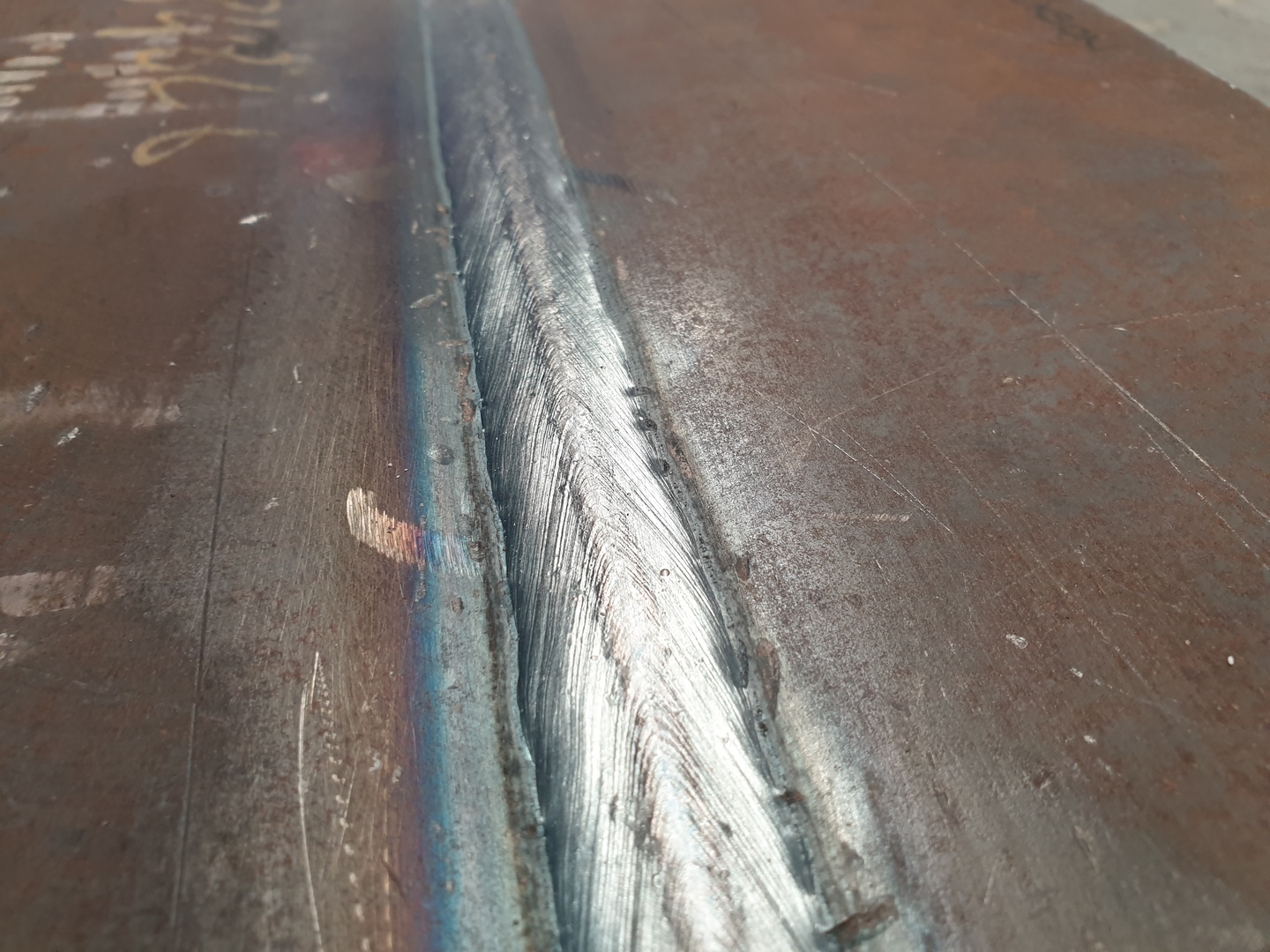Ingenious Methods to Fillet Weld Assessment and Testing: Enhancing Weld Top Quality and Compliance Requirements
In the realm of welding, the quality and stability of fillet welds play a vital duty in guaranteeing the architectural soundness and dependability of numerous commercial parts. With the consistent drive for enhanced effectiveness and compliance with stringent requirements, the exploration of ingenious techniques to fillet weld evaluation and testing has come to be important. As markets progress, the traditional techniques might no more be adequate in meeting the demands of contemporary welding applications. By accepting sophisticated technologies and approaches, a new horizon of possibilities arises in the realm of weld top quality evaluation and adherence to conformity criteria.
Advanced Non-Destructive Testing Approaches
Using modern modern technologies, progressed non-destructive screening approaches play a vital function in making certain the honesty and quality of fillet welds. These methods, such as phased selection ultrasonic screening (PAUT) and magnetic bit screening (MPT), offer detailed insights into the weld's inner structure without creating any kind of damage to the material. PAUT, for circumstances, utilizes several ultrasonic components to evaluate the weld from different angles, giving an extensive visualization of possible problems like absence of combination or splits.
Similarly, MPT is effective in spotting surface-breaking issues by using an electromagnetic field and iron particles to the weld area. This technique is specifically helpful for identifying gaps that might endanger the weld's toughness. By utilizing these sophisticated non-destructive testing methods, weld inspectors can precisely assess the quality of fillet welds, making certain conformity with industry standards and laws. The ability to find flaws at an early stage not only improves weld quality however also avoids expensive rework or failings in architectural stability, underscoring the value of these cutting-edge screening techniques in welding examinations.
Robotics and Automation in Assessment
The combination of robotics and automation has transformed the evaluation process for fillet welds, boosting effectiveness and accuracy in quality analysis. Robotics use accurate control and repeatability in examining welds, making sure regular and trustworthy outcomes. Automated systems can be configured to adhere to certain evaluation paths, making certain thorough insurance coverage of welds and minimizing the risk of human mistake.
Robot inspection systems equipped with sophisticated sensors can detect and determine weld functions with high precision, offering in-depth information for analysis. These systems can identify defects such as cracks, lack of combination, and porosity, making it possible for prompt rehabilitative activities to be taken. Furthermore, robotics and automation permit real-time data collection and analysis, giving immediate comments to drivers and helping with fast decision-making procedures.
Moreover, the use of robotics and automation in fillet weld examination boosts general productivity by decreasing evaluation times and increasing evaluation throughput. By improving the examination procedure, suppliers can make certain weld top quality and compliance requirements are fulfilled efficiently, ultimately leading to set you back savings and boosted product quality.
Making Use Of Expert System for Evaluation
Fabricated intelligence plays a critical duty in enhancing the performance and accuracy of analysis in fillet weld evaluation procedures. AI algorithms can rapidly refine vast quantities of data from weld examinations, detecting flaws or incongruities that might be challenging to recognize with the nude eye - Welding Inspection Racine.
Additionally, AI systems can discover from past evaluation data, consistently enhancing their capability to identify potential issues and variances in fillet welds. This flexible discovering capability boosts the total quality assurance process, decreasing the probability of human mistake and making certain that welds meet the called for requirements. By incorporating artificial knowledge into fillet weld analysis, markets can Discover More achieve greater degrees of performance, uniformity, and conformity in their examination practices.
Portable Tools for On-Site Examination
 Enhancing area assessment efficiency, the fostering of portable devices revolutionizes on-site assessment procedures for fillet welds. These tools offer adaptability and comfort, allowing examiners to carry out extensive evaluations in numerous locations, consisting of challenging or remote settings. Mobile tools such as ultrasonic testing tools, magnetic particle evaluation tools, and digital radiography systems supply real-time information and high-resolution imaging capabilities, enabling fast decision-making and prompt responses on weld top quality.
Enhancing area assessment efficiency, the fostering of portable devices revolutionizes on-site assessment procedures for fillet welds. These tools offer adaptability and comfort, allowing examiners to carry out extensive evaluations in numerous locations, consisting of challenging or remote settings. Mobile tools such as ultrasonic testing tools, magnetic particle evaluation tools, and digital radiography systems supply real-time information and high-resolution imaging capabilities, enabling fast decision-making and prompt responses on weld top quality.One significant benefit of mobile tools is their capability to improve evaluation procedures, lowering downtime and boosting total productivity. Examiners can conveniently transfer these tools to different work sites, removing the requirement for delivering hefty machinery or elements to off-site centers. Additionally, the transportability of these tools advertises cost-effectiveness by minimizing transport expenditures and accelerating assessment timelines.
Additionally, using portable devices for on-site assessment promotes positive quality assurance procedures, as examiners can immediately recognize and attend to any type of potential welding issues or inconsistencies. By including these ingenious technologies into on-site assessment practices, welding experts can ensure conformity with industry standards and improve weld quality, eventually resulting in boosted architectural honesty and security in various useful content welding applications.
Assimilation of Data Monitoring Systems
Having maximized on-site inspection processes through the usage of mobile devices, the next phase involves the seamless combination of information monitoring systems to better enhance efficiency and information analysis abilities in fillet weld evaluation and testing. Welding Inspection Racine. By incorporating information monitoring systems right into the assessment procedure, companies can simplify data collection, storage space, and evaluation. This combination allows for real-time monitoring of weld high quality, prompt identification of problems, and timely decision-making to remedy any kind of concerns that may arise throughout the examination procedure
Information management systems play a crucial duty in centralizing assessment data, facilitating simple gain access to for licensed workers, and guaranteeing data stability and safety and security. With the assimilation of these systems, assessors can generate thorough records, track historic data for trend analysis, and enhance general procedure effectiveness. Furthermore, the integration of data administration systems makes it possible for smooth interaction in between different stakeholders involved in the evaluation process, promoting collaboration and boosting general quality control actions. find out this here Ultimately, the assimilation of information monitoring systems offers to boost the standards of fillet weld assessment and screening, guaranteeing compliance with industry guidelines and boosting weld high quality.
Conclusion
In conclusion, cutting-edge approaches to fillet weld inspection and testing have actually considerably boosted weld quality and conformity criteria. Advanced non-destructive screening approaches, robotics, automation, expert system, portable tools, and information management systems have actually revolutionized the means weld examinations are performed. By utilizing these innovations, sectors can make sure that welds fulfill the required quality standards and guidelines, eventually enhancing general efficiency and safety and security in welding procedures.

By utilizing these innovative non-destructive screening techniques, weld inspectors can precisely analyze the quality of fillet welds, guaranteeing compliance with industry requirements and laws. Mobile devices such as ultrasonic testing tools, magnetic fragment evaluation tools, and electronic radiography systems give real-time information and high-resolution imaging capabilities, enabling fast decision-making and instant feedback on weld high quality.
Having enhanced on-site inspection processes with the usage of mobile tools, the following phase includes the smooth integration of information administration systems to better boost efficiency and information analysis capabilities in fillet weld inspection and screening (Welding Inspection Racine). Eventually, the combination of information management systems offers to raise the criteria of fillet weld examination and screening, ensuring compliance with sector laws and improving weld top quality
 In verdict, cutting-edge approaches to fillet weld examination and testing have considerably boosted weld top quality and conformity standards.
In verdict, cutting-edge approaches to fillet weld examination and testing have considerably boosted weld top quality and conformity standards.